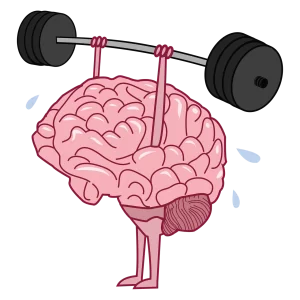independent health women’s wellnesses 2024
Independent Health & Women’s Wellness: A Complete Guide
The term “women’s health and wellness” refers to everything from physical issues to mental well-being and social-emotional stability. Good health is a complex process that involves several elements and requires an integrated approach. This article will discuss the four key elements of independent health and women’s wellness, including self-care, mental health, and reproductive female issues, in addition to summarizing socio-economic factors that affect overall well-being as a result of growing up.
-
The Significance of Personal Health
Independent health is when a woman is able to be responsible for her own health and has the knowledge of what she needs to do in order to take care of herself. It’s an idea that allows women to take charge of their health and do research on available resources, as well as speak up for what they need at the doctor. But women do need to be informed about their choices; they must have universal access to correct information and sound health-care services for them to choose what is most suitable in case of an unplanned pregnancy.
In today’s world, with women juggling so many different roles in society as we enter the 21st century, being responsible for our own health is a necessity. Whether it be managing both a career and family, chasing personal dreams, or simply growing old alone while maintaining good health, it is an absolute must. Independence should not only be in the form of good health (physical addiction) but also mental and emotional resilience; this includes social dependence. what are important aspects of your health 2024?
-
Mental well-being and emotional health
It is as important, if not more (in my opinion), when looking at the big picture of women’s wellness. How come women get depression more than men? Because they are biologically, socially, and culturally placed in a certain way to produce health problems that should not even exist. Combining stress and hormonal changes with societal pressures that are very much present can result in mental health conditions.
It is very important for a woman to give her mental health priority by following certain practices that can ensure emotional well-being. That might look like participating in regular exercise, utilizing the mindfulness practices that work for you, doing consultative or therapeutic work on yourself, and working to build a constellation of people who can be there if needed. While all this is taking place, if women are able to focus on their mental health with greater emphasis than before as a proactive action, they can manage stress better, which will eventually help them improve their standard of living and cause fewer risk factors for various chronic mental conditions.
independent health women’s wellnesses
-
Family Planning and Reproductive Health
Women’s wellness at its best: Concerns of reproductive health. It covers a number of subjects, such as menstrual health, contraception, pregnancy, childbirth, and prenatal management with menopausal gynecologic changes. Women need to have their choices informed by access to family planning and reproductive health services—the ability for women to choose what happens with their own bodies is imperative.
Family planning affords women the ability to control when—and if—in their lives they have children, which in turn impacts their health, economic stability, and welfare. Access to contraception and information about reproductive health give women the power not to have unwanted pregnancies and to avoid too soon births regarding one another’s children or five in the same year, for example. Moreover, access to adequate prenatal and postnatal care is essential for the health of a mother as well as her baby.

-
Nutrition and Physical Health
Nutrition is the key pillar of women’s health. A healthy diet, comprised of all the important nutrients that fuel your desires, is integral to good health and well-being. In general, women need to pay more attention to their food than do men—particularly during adolescence (when the bones are built), pregnancy, and lactation—as well as when it comes to coping with the challenges of perimenopause or managing a host of health problems in midlife.
Women must take extra care of iron, calcium, and folic acid, while omega-3 fatty acids are beneficial. Iron promotes red blood cell generation and prevents anemia, while calcium ensures healthy bones. Meeting the needs of both folic acid—a must-have for preventing birth defects during pregnancy—and omega-3 fatty acids are healthy diet additions. What causes extreme mood shifts in women?
Along with a nutrient-rich diet, regular exercise is key to weight management and also helps shield against chronic diseases like heart disease as well as benefit mental health. Physical activity can also help you reduce stress, maintain your energy levels, and get better sleep, all of which are aspects of well-being.
-
Role of Socio-Economic Factors in Women’s Health
Socio-economic determinants are one of the major reasons why women have poor health and lower standards. Poverty, lack of education, or very scarce access to health care services can drastically affect the capacity for maintaining good well-being in many women. Women in low-income communities may confront poor access to fresh and healthy food, safe housing, and health care services that are needed for maintaining good health status (1–3).
Education can improve health by giving women the information and skills necessary to make choices that directly affect their own well-being. Because educated women are more likely to use preventive care, engage in healthy behaviors, and become their own personal health advocates,.
Economic stability is also a key factor in women’s wellbeing. The financial independence of women allows them to afford healthcare services, a good diet, and live engagingly. Creating employment opportunities, decent pay scales, and gender-sensitive work policies in the workplace are also fundamental for the better health of women.
-
Preventive Health Care
Well, women’s exams are the basis of women’s wellness and preventive health care. Screening and prophylactic vaccination, as well as regular health checkups, can identify diseases in their earliest stages, when more treatment choices are less likely to lead to limitations. Preventive care includes mammograms, PAP smears, bone density tests, and blood pressure checks.
It is equally important that women work toward health promotion and disease prevention by being informed of their family medical history, what diseases put them at risk for the most part (screening those early), or simply making lifestyle choices to mitigate known risks. Preventive care can identify health issues early on, as well as ensure that your body is in the best possible condition and reduce the risks of chronic diseases.
-
Social Support and Community
Social support is a crucial determinant of women’s health and well-being. Good family, friends, and community support can give you a sense of belonging as well as needed emotional scaffolding. It reveals more positive health outcomes for women who are connected to their communities and have support networks.
Women’s health community programs can include support groups, education workshops, and fitness classes to promote well-being. These programs are great for women to meet other like-minded individuals, share experiences, and access key resources.
-
How Cultural and Social Norms Influence
Women are often deeply affected by cultural and societal norms when it comes to health. For example, many cultures have practices of gender identity that limit the freedoms women can experience in health services; they might use their bodies to achieve access to education or employment. These cultural barriers need to be addressed if improvements are going to be made in the health of women.
Ultimately, advocacy and education are instrumental approaches to challenging our harmful societal norms in order to foster gender equality. Through awareness of the value in women’s health and wellness, bolstered by better policy support for women-empowering laws, the opportunity exists to create a culture that encourages growth potential among our nation’s female population.

-
Aging and Women’s Health
They also need recurring health care as they age. Symptoms and signs of menopause (abdominal pain, hot flashes) aside, other topics at the top of-mind typically include bone health, but a bigger reality is the risk for chronic diseases postmenopausal like heart disease and osteoporosis. Women need to take the time to learn about how their bodies change as they age and do what is necessary—within reason—in order for them to not only be healthy but remain vibrant.
Exercise, proper nutrition, and preventative care are even more critical at this age. Furthermore, being socially active and taking part in community activities can help reduce isolation and depression, which are prevalent among the elderly.
-
Conclusion
Women do still want to aim for health, and they recognize that their independence is tied into both their wellness in general and by gender-specific initiatives. When women consciously pay attention to their mental health, reproductive health, nutrition, and socio-economic factors, preventive care does the job of ensuring they remain at the top of their game. Ensuring women can make healthy choices, know their options, and have access to quality healthcare is key for a lifetime of health.







More Stories
Beginner dead bug exercise 2024
Daily healthy routine 2024